“… she stood tall and lithe in the morning light and began to dance… As the sweat from her limbs and the blood from her feet met with the stone below, it quickened. Drawn by her movements and fed by her flesh, great vines sprang forth.” In the epic story Colin is writing, Blómai is a heroine whose dance upon the rocks gives birth to the vines which ultimately save her people. (Her name is derived from the Old Norse blóm ‘flower, blossom’, blómi ‘prosperity’)

Colin currently creates his miniature to 3/4 life-scale works in Chavant’s “Le Beau Touché.” It is a neutral greenish-grey, quite sticky and very malleable when warm. He heats the clay initially in a small countertop oven and keeps it at around 140˚ F. He also has a small incandescent desk lamp at the side of his sculpting table that keeps small amounts warm and workable.
Usually, he begins with a scale roughed-in figure in an anatomical pose to get the basic limb lengths and volumes in place. He then articulates the figure and adapts the measurements to reflect the pose. After *some* time, here is the completed clay sculpture. Notice in the first image the support armature which goes into a less detailed area of her back near her spine. This helps to support the sculpture in the sculpting, but also is necessary for the mold-making process.

Looking at the images of the clay original above, with all the parts spiraling around each other, you can imagine it would be quite impossible to develop a single mold that could be opened after pouring material into it. Also, in the figure’s arrangement, it would be pretty near impossible to get material to flow into all the smaller bits like fingers and tips of the hair. So, apart she comes. Our original sculptures always end up as a pile of parts.
Both arms, the vines and the tail end of her hair were removed. Her body was cut just above the ankles, with the feet remaining attached to the base. We do it this way to make our life easier after casting. If we cut her feet off the base, when we weld the parts back together, much of the details in her little toes would be obliterated. And if you’ve ever attempted to re-sculpt fingers or toes in bronze using a Foredom and grinding bits… well, it is no fun, no happy and grumpy Kristine who does a lot of the bronze chasing. This way, the weld lands in an area that has little detail to be recreated. We could rejoin these parts in the wax, but generally we’ve had more successful castings when they are done separately.
The molds for the body and base were done with a traditional tin-cure silicone mold and plaster mother mold. If you’re unfamiliar with what this is, in the following article, you can see this type of mold and the process of wax casting in the short video at around 45 seconds: https://www.muddycolors.com/2022/02/going-big-enlarging-the-wind-in-the-waves/ We use reclaimed (from the foundry) microcrystalline wax, called “Victory Brown” to pour these larger sections.
The interesting thing about Blómai from a process standpoint was the combining of this traditional bronze process with a process more typically used in jewelry making – wax injection. The smaller parts of the sculpture were all molded using this other process.
Wax injection allows for highly detailed, tiny parts of sculptures to be cast into wax more effectively than relying on a traditional gravity pour to fill all the little details. A wax injector is basically a pressurized, heated pot. When you press a specially designed mold against an external nozzle, it squirts the molten wax in, filling all the voids. Pretty cool. You can read more in detail about the process of making injection molds here: https://www.muddycolors.com/2022/12/making-small-scale-bronze-sculpture/
The jewelry wax used in this process is harder when it cools and can hold small details superbly well. It also does not heat up from handling it during the wax dressing (removing seams, fixing blemishes) as does the traditional microcrystalline wax used for larger parts. These smaller parts would easily warp and deform from the warmth of your hand if cast in a traditional wax.
Colin wanted each sculpture in the edition to have a unique number and placement of leaves on the vines. He sculpted five distinct leaves – different sizes with subtle variations – so that the viewer’s discerning eye wouldn’t immediately identify that all the leaves were the same (which is not how a vine would be). Collectors often select the amount of leaves for their sculpture based on a number that is meaningful to them.
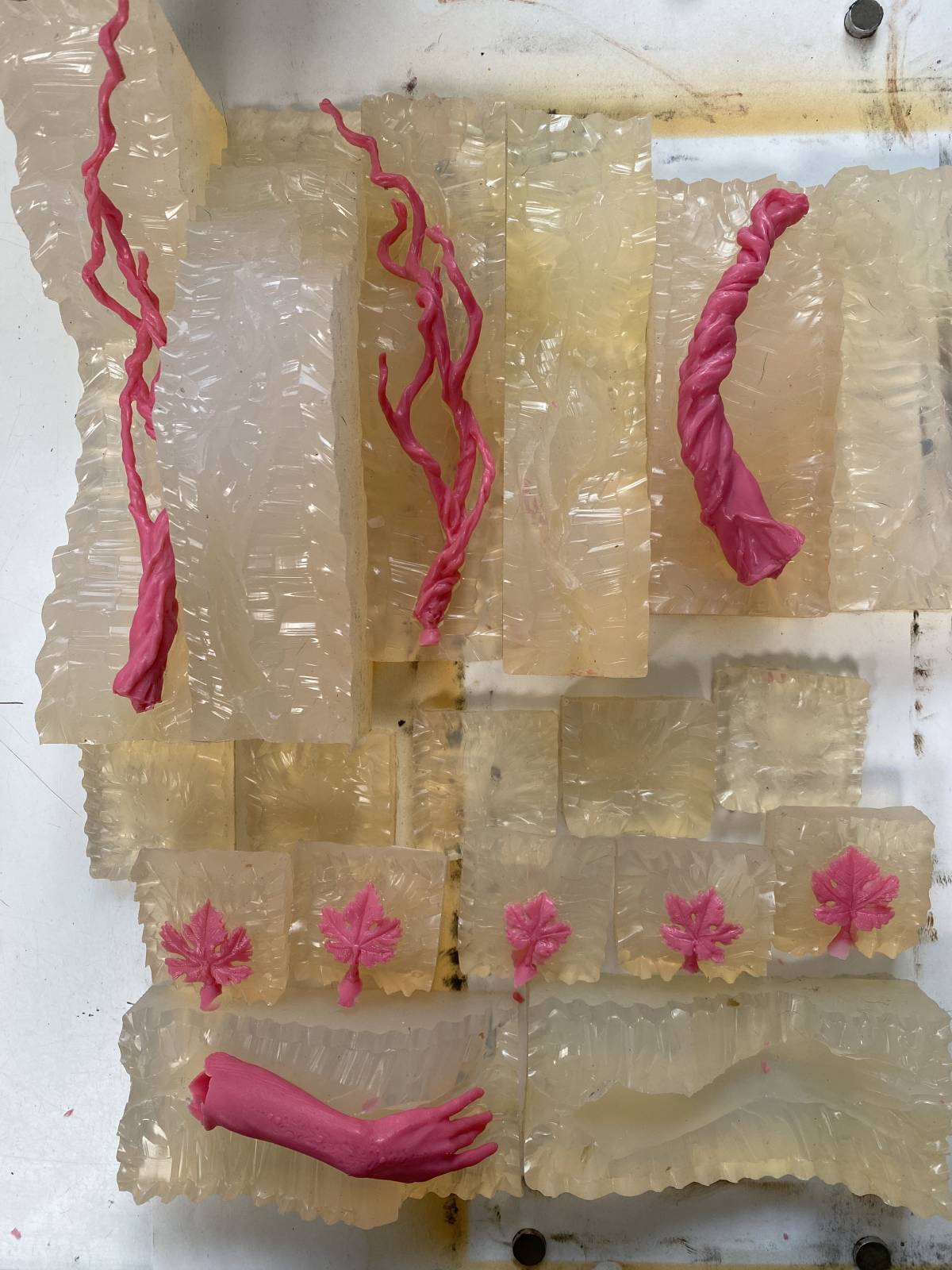
Here you can see the five leaf variations, plus the vines. We also molded the arms and hands using this process to fully replicate the surface embellishments Colin sculpted. Of course, there is a slight difference in the shrinkage of different waxes in their cooling, but we haven’t found it to be substantial enough to make a difference.
Colin attached the leaves to the vines (vewy, vewy carefully). We don’t actually get to see the full sculpture with the leaves attached until everything has been cast in bronze and welded back together – it’s an exciting moment to see the vision spring into life.
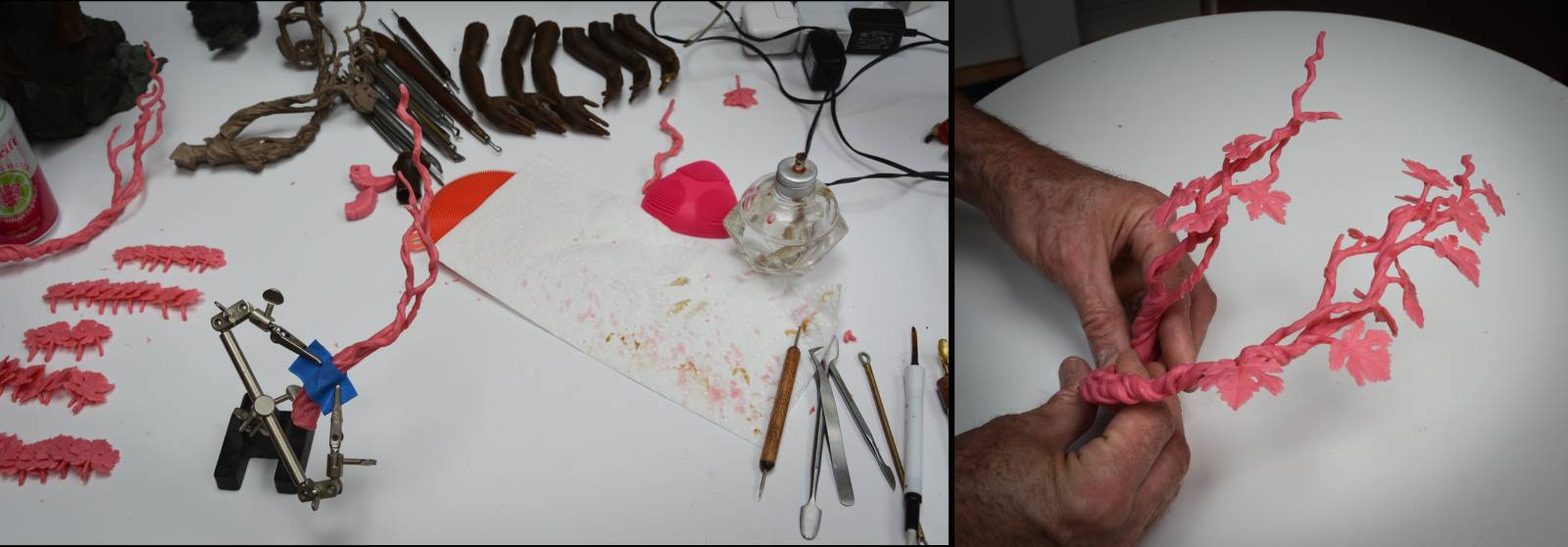


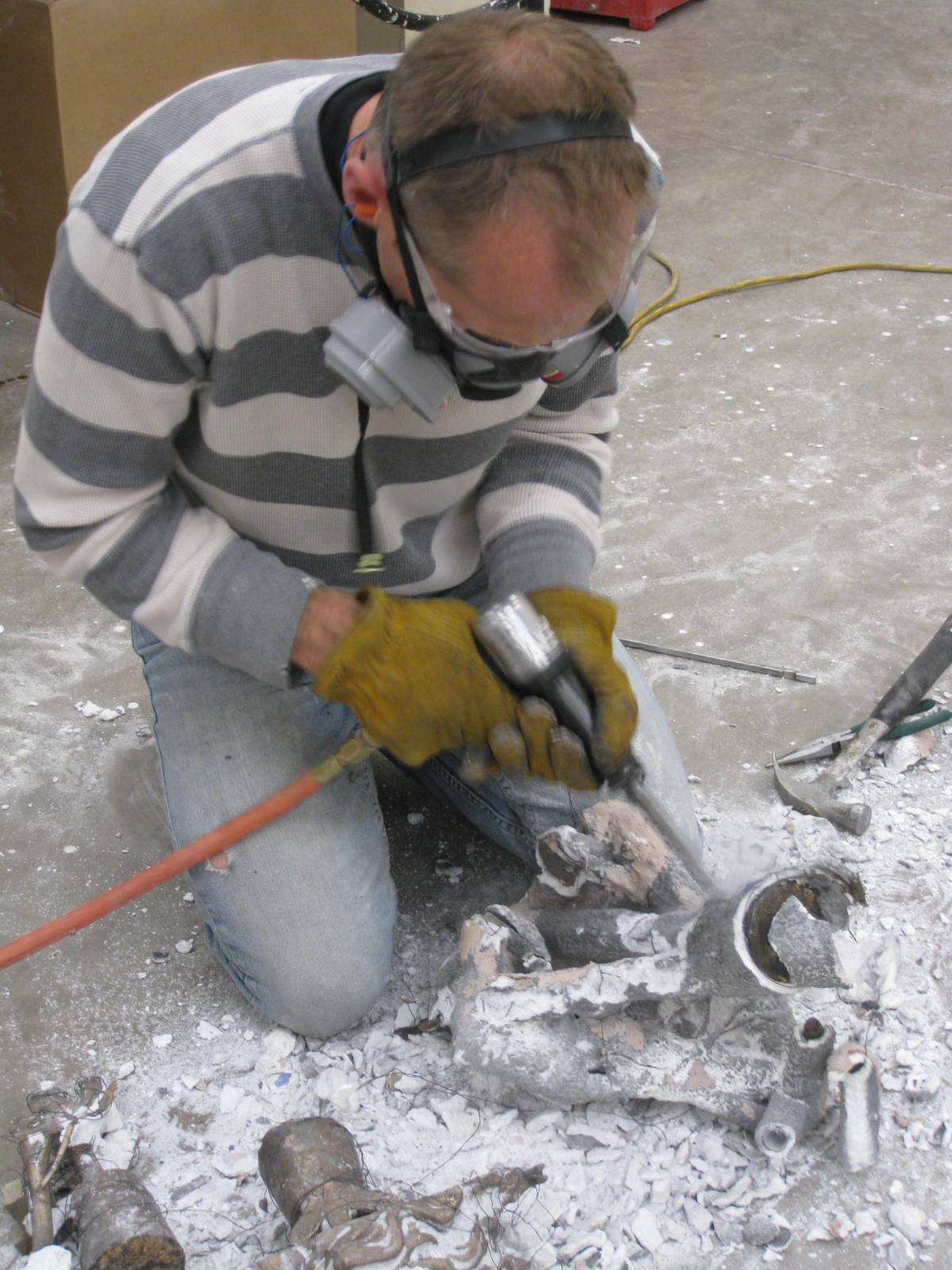



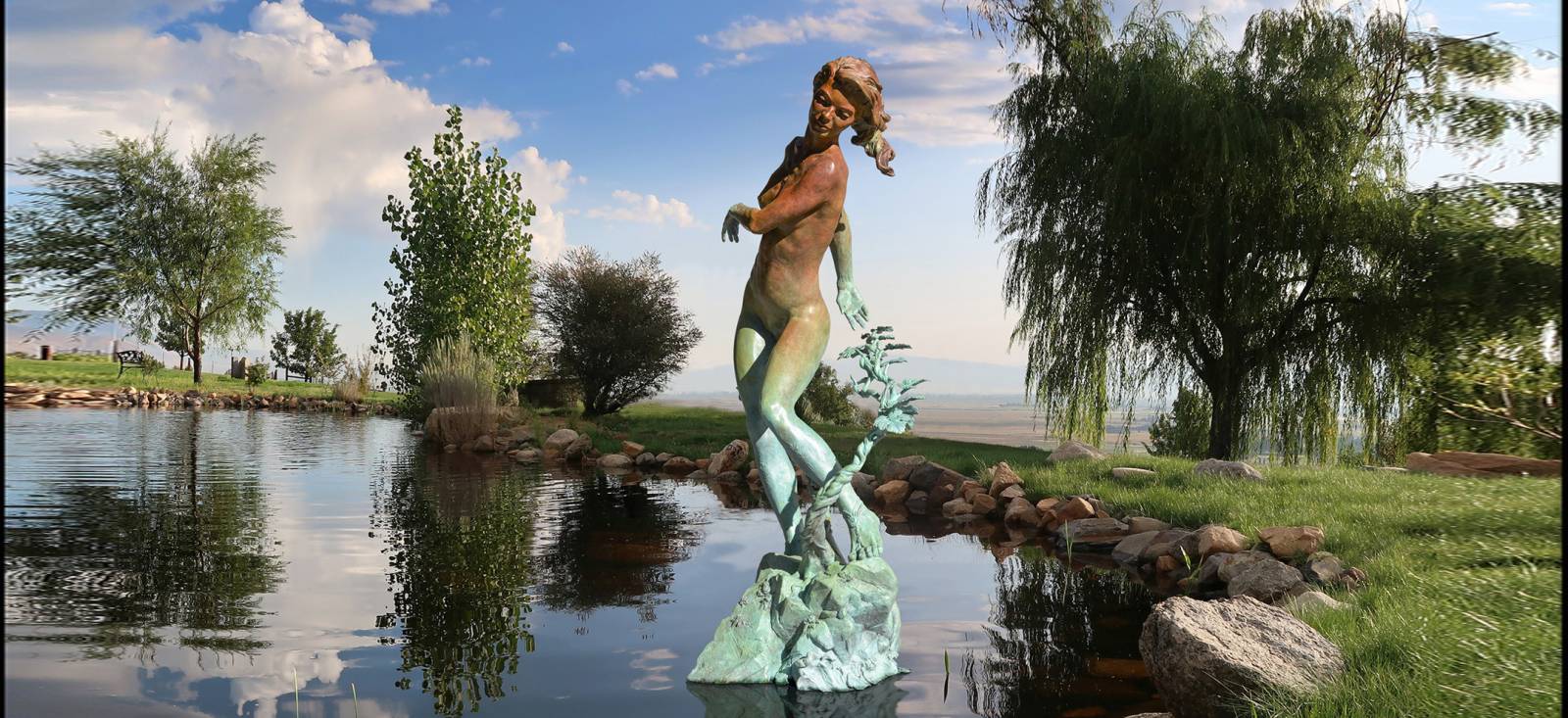



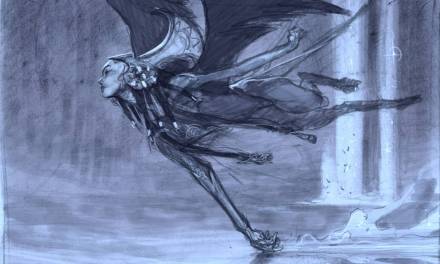

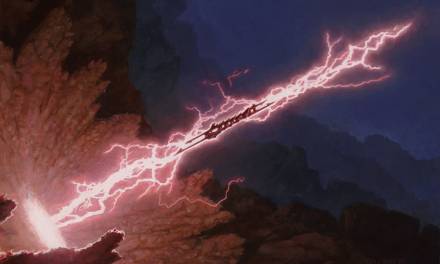
Beautiful. Thank you, Kristine.
Hi Valerii,
Thanks so much for reading! Happy to hear you enjoyed it. K